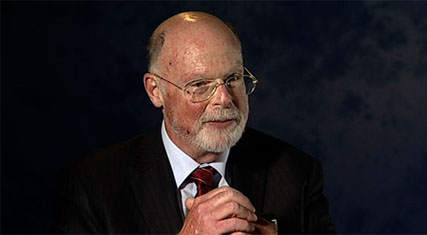Defence flags $708m IT splurge

The Department of Defence intends to inject $708 million into its ICT systems over the next 10 years as part of its strategic reform program, according to a document released today.

Defence CIO Greg Farr
(Credit: ZDNet.com.au)
The $708 million in costs will drive the $1.9 billion in ICT savings Defence hopes to achieve over the same time period, with $250 million in each year thereafter, according to Defence.
Only half of the $1.2 billion spent on technology each year is visible to the CIO Greg Farr, according to the department, causing inefficiencies. In its white paper, of which the document released today was a part of, Defence had said that it intended to power up the CIO role.
In addition, it planned to improve the visibility situation by creating a "consolidated, standardised" technology environment with a centralised strategy, for which it has now put $708 million on the table.
The department is planning to implement a single network connecting all Defence sites, built on a single set of standards and products. The network would know which people had the right to access which information. Defence's old way of accessing networks with different security levels via different machines would be dumped, by having a single screen connected to a wireless network which would display multiple security sessions.
Of the planned $708 million spend, $100 million will be splashed out in the 2009/2010 financial year, followed in the next year by $272 million, then $233 million and $63 million in the 2011/2012 and 2012/2013 financial years respectively.
In order to achieve the $1.9 million in savings, the department also means to lower business as usual costs via standardisation and new procurement strategies, increasing robustness of Defence assets as well as via datacentre consolidation. The number of Defence datacentres would be reduced from 200 to 10. The effectiveness of the two-pass process for ICT projects would also be put under the microscope.
Automated processes and shared services will get a run, with Defence deciding to automate procurement, personnel and pay administration, vetting, recruitment, estate management and performance reporting.
ICT will get an additional spend from Defence logistics, where the department intended on investing in IT systems, which would make Defence employees able to better see stock, improve inventory accuracy and achieve productivity gains. Required for the logistics reform was $630 million, which would incur savings of $320 million over the decade and $59 million each year after.
Defence said that 1100 contractor positions would be converted into Australian public service positions, although it did not specify how many of them were ICT-related. Recently, Defence said that IT contractor numbers to be made into public service positions would be considered this year.
Prime Minister Kevin Rudd also announced today that Defence Minister Joel Fitzgibbon had handed in his resignation.